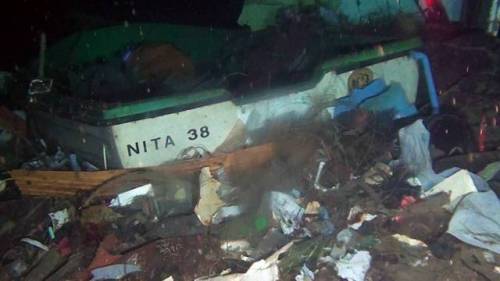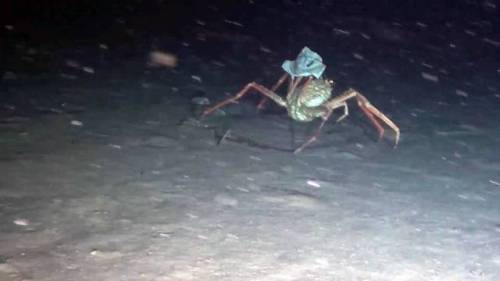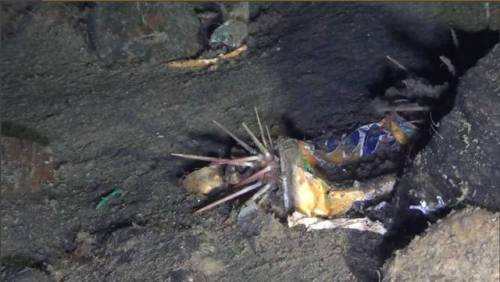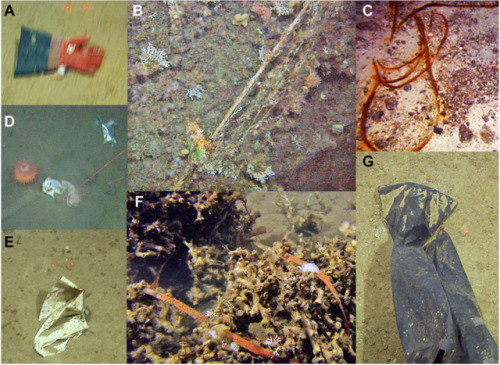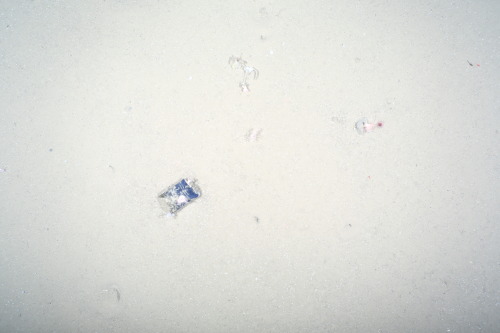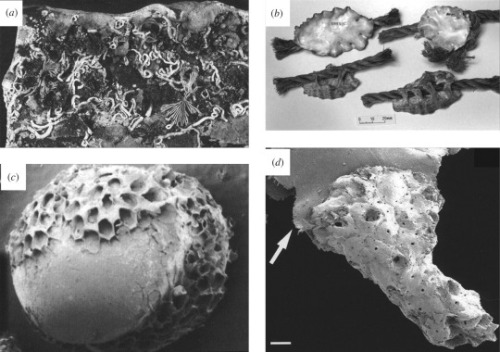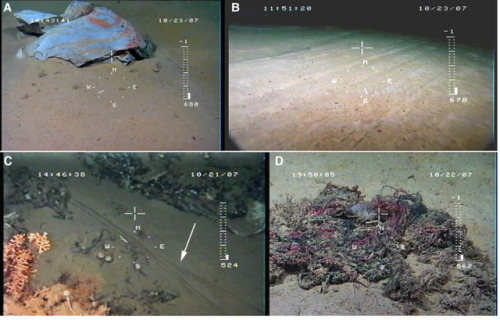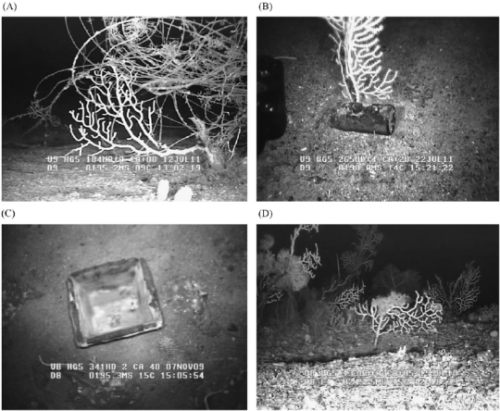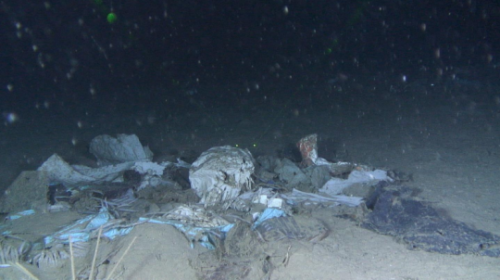#benthic debris
Filipino researchers visited the Emden Deep, also known as the Galathea Deep or Galathea Depth, the third deepest trench on the ocean’s planet, more than 10,000m below the surface and found plastic debris.
- source:Channel News Asia
Post link
HUGE DUMP FOUND AT THE BOTTOM OF THE MEDITERRANEAN
Images obtained by an underwater exploration robot at the seafloor of the Strait of Messina in Italy, have revealed the largest concentration of garbage ever recorded in deep waters anywhere in the world.
The photos extracted from ROV video footage show examples of benthic litter accumulations observed within channels in the Messina Strait, including: bricks, tires, clothes and large metallic objects, small and large mounds, sometimes formed around large items such as a buried car and a sunken boat.
Litter is patchy but pervasive on all surveyed channels, reaching densities up to 200 items in 10 meters of observation. Such impressive amount of litter can be explained by submarine canyons acting as carrier of marine litter from shallow water to the deep sea and a strong urbanization of the coastal area.
- Reference (Open Access): Pierdomenico et al., 2019. Massive benthic litter funnelled to deep sea by flash-flood generated hyperpycnal flows. Scientific Reports.
Post link
Fishes swiming near plastic debris at the Samandag Cevlik Akcay dive site off the coast of Samandag, in Hatay province, Turkey.
- Photo by Şebnem Coşkun/Anadolu
Post link
Aplastic bag found by Victor Vescovo, when he descended nearly 10,927m (nearly 6.8 miles) to a point in the Pacific Ocean’s Mariana Trench, one of the deepest part of the ocean. He also found a sweet wrappers.
Two decades ago, Kaikō, a remotely operated underwater vehicle (ROV) built by the Japan Agency for Marine-Earth Science and Technology (JAMSTEC) recorded a plastic bag at 10,898 meters deep in the Mariana Trench.
Post link
PLASTIC BAG RECORDED AT BOTTOM OF MARIANA TRENCH
The world’s deepestplastic bag has been found at the bottom of the Pacific Ocean’s Mariana Trench, at 10,898 m. Plastics are ubiquitous even at depths under 6000 m, most of them are single-use products.
The findings comes from over 5,000 separate dives using deep-sea remote vehicles (ROVs). But not only plastic was found, also metal, rubber, fishing gear, glass and various other man-made items. The study showed association of plastic debris with deep-sea biota, which was relatively frequency, 17% of debris images were found with at least one organisms. Researchers found entanglement of plastic bags in the cold seep communities.
According to japaneses researchers who conducted the study, plastic debris, particularly single-use products, has reached the deepest parts of the ocean. Whereas regulation on the production of single-use plastic and the flow of such debris into the coast are the only effective ways to prevent further threats to deep-sea ecosystems, successful management of plastic waste is possible through internationally harmonized practices based on scientifically sound knowledge.
Surprising, this moment was observed by ROV KAIKO on May 20th, 1998, more than 20 yeas ago.
Post link
Using an Ocean Infinity AUV (Autonomous Underwater Vehicles), Argentina found the submarine ARA San Juan, the Argentine Navy submarine which was lost on 15 November 2017. The ARA San Juan had been found at 907 m depth, 500 km off Comodoro Rivadavia, in Southern Argentina.
- Source: Argentine navy @Armada_Arg
- more at BBC
Post link
A deep sea anemone partially attached to a plastic bag in Shiribeshi Seamount, located in the east of the Okushiri Ridge, northeast Japan.
- Photo: Japan Agency for Marine-Earth Science and Technology (JAMSTEC).
Post link
This brittle star is a new ophiuroid species, animals related to sea stars and sea urchins. Called Astrophiura caroleae, is described from off Curacao in the southern Caribbean, and from the western Gulf of Mexico, in depths of 244 to 434 meters.
Despite the finding of this new species, it is remarkable that it was found in the vicinity of benthic marine debris, as shown in the image, where the specimen used to described this species (holotype) was found on a discarded beer bottle, the specimen is that small red point on the green bottle.
Post link
Aplastic ice bag, likely blown overboard from a fishing vessel found at a depth of ~3,700 m in Enigma Seamount, near the Mariana Trench
- Photograph: NOAA Office of Ocean Exploration and Research, 2016 Deepwater Exploration of the Marianas.
Post link
Litter is present in all marine waters around the globe. It consists of several compound classes of which plastic is of special interest because of its high abundance and possible threat to marine organisms.
Distribution, composition and abundance of large litter items at the sea floor of the North Sea and the Baltic Sea was investigated based on 175 bottom trawls between 2013 and 2015. In the North Sea and in the Baltic Sea plastic represented 80% of the litter items.
Post link
Examples of litter observed on the seafloor in the Nordic Seas
A. rubber glove, B. gill net, C. trawl wire, D. Drinking cartons, E: soft plastic, F: Plastic straps, G: Plastic bag.
Marine litter has been found in all marine environments in the Nordic Seas. These ecosystems are under pressure from climatic change and fisheries while the human population is small. According to submarine video transects most of the litter is originated from the fishing industry and plastic is the second most common litter. Background levels are comparable to European records and areas with most littering had higher densities than in Europe.
- Photo curtesy of Mareano-IMR
- Reference: Buhl-Mortensen & Buhl-Mortensen. 2017. Marine litter in the Nordic Seas: Distribution composition and abundance. Marine Pollution Bulletin
Post link
Plastic pollution is found in all oceans. Now we have photographic evidence showing benthic pollution in remote areas such is Arctic.
The accumulation of plastic in the Arctic region is almost certainly not caused by local populations. Marine litter, mayority compound by plastic, it’s carried in from distant regions by currents in the Atlantic Ocean. According to Melanie Bergmann, whom took these pictures, every time finds more litter items on the Arctic seafloor: pieces of a beer bottle, string, glass, fisheries net, a plastic bag and bits of plastic.
Arctic plastic is small, fragmentend, weathered and aged, indicating that it had been traveling the seas for decades, fragmenting into smaller and smaller pieces along the way. Detailed image analysis indicate the trend is still on the increase!
Post link
Pelagic plastic items are commonly colonized by a diversity of encrusting and fouling animals. Most of these are sessile, hard-shelled or crustose organisms and dominated by moss animals (bryozoans). Also included are barnacles, tube worms, foraminifera, coralline algae, hydroids and bivalve molluscs.
Aggregations of marine debris can provide habitats suiting the larval and juvenile stages of numerous marine organisms. They may also attract free-living, ocean-roaming predators that often gather under fish aggregating devices, and where others simply sought a protective haven.
Example of colonization and encrustation on plastic debris from the New Zealand coastline:
(a) Heavy and varied colonization of a plastic slab recovered (note the hard bodied encrustations and soft fleshy epibionts.
(b) Cuttings from a tangled mass of synthetic rope, carrying a cargo of the warm-water Indo-Pacific oyster, Lopha cristagalli, a species that is alien to New Zealand waters.
© Plastic pellet (raw material for manufacture of plastic products) encrusted by the bryozoan Membranipora taberculata.
(d) Small bryozoan colony (Galeopsis mimicus) attached to a frayed plastic flake (arrowed) recovered from a depth of 393 m off the east coast shelf off the South Island. scale bar 0,2 mm.
- Reference (Open Access): Gregory, 2009. Environmental implications of plastic debris in marine settings—entanglement, ingestion, smothering, hangers-on, hitch-hiking and alien invasions. Philosophical Transactions of the Royal Society B: Biological Sciences.
Post link
During a visual exploration in the north-western Mediterranea using remote operated vehicles (ROVs) a noticeable level of anthropogenic impact was observed in all studied zones,with 158 recorded artificial objects of various types detected.
Different types of anthropogenic impacts observed:
(A) Litter
(B) Trawl marks
© Longlines
(D) Fishing net.
Post link
Examples of benthic debris items observed from the Delta submersible during deep-water surveys on the seafloor off central and southern California:
a) monofilament fishing line in gorgonian corals off central California at 95 m (photo by M. Yoklavich).
b) gill net snagged on rock off southern California at 80 m (photo by D. Schroeder).
c) beer bottle with shortspine combfish off southern California at 182 m (photo by L. Snook).
d) derelict spot prawn trap continuing to capture crabs off southern California at 247 m (photo by M. Love)
Post link
This is outside Nesoddtagen in the Oslofjord in Norway.
Over 8 million tons of plastic ends up in the ocean every year. That is 15 tons every minute, 365 days a year. Estimates calculate that over 70% of this garbage ends up on the ocean floor.
How does the ocean floor look like at your local area?
- video:FredrikMyhre (1:33 min)
Derelict fishing gear and other marine debris smother existing animals and create an unstable habitat for those organisms that survive the initial impact. Here some examples of litter items on Condor seamount, west-southwest of Faial Island in the Azores, and interactions with local fauna.
A) close up of a Dentomuriceacf. meteor entangled within a longline
B)glass bottle next toDentomuriceacf.meteor
C)lost wooden box used by fisherman to hook their longlines
D) several Dentomuriceacf.meteor partially damaged
- Reference (Open Access): Phamet al. 2017. Abundance of litter on Condor seamount (Azores, Portugal, Northeast Atlantic). Deep Sea Research Part II Topical Studies in Oceanography
Post link
According to scientists consensus, there is no place in the ocean without plastic pollution.
Here are two exaples of excepcional records of acummulation of deep-sea litter in the Japan Trench. Plastic bags in the gap made by a big earthquake off Sanriku in Shinkai, at 6272 m depth (picture a) and the Suruga Bay at 2170 m (in the picture b).
These two records come from a research dive done in 1991 by JAMSTEC.
Post link
Brisingid starfish, brittle stars and chrinoids on an old barrel
A large brisingid starfish is accompanied by numerous brittle stars and chrinoids on a discarded barrel on the seafloor offshore Olympic National Park at 2315 m depth.
- Photo taken by ROPOS, which is operated by the Canadian Scientific Submersible Facility./ Ocean Networks Canada flickr
Post link



